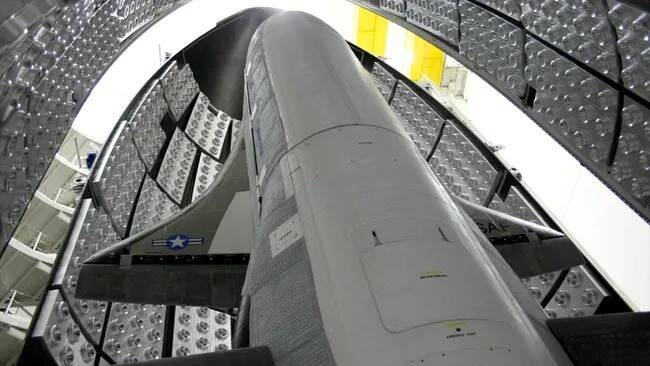The U.S. Space Force’s enigmatic X-37B spaceplane is readying for its next orbital mission, scheduled to launch atop a SpaceX Falcon 9 rocket on August 21 from NASA’s Kennedy Space Center in Florida. This marks the eighth mission for the reusable, uncrewed spaceplane—officially designated Orbital Test Vehicle-8 (OTV-8).

Credit: U.S. Space Force/Boeing
The X-37B’s return to orbit comes just 5.5 months after completing its last mission, OTV-7, which saw the craft spend a record-setting 434 days in space before landing on a runway. While the duration of the upcoming flight remains undisclosed, Space Force officials have shared some insight into its technological payloads and objectives.
According to a statement released on July 28, OTV-8 will carry experimental technologies aimed at advancing space-based capabilities for defense and communications. Among the mission’s highlights are tests of a high-performance quantum inertial sensor, touted as the most advanced ever deployed in space, and a laser communications system that will interact with commercial satellite constellations in low Earth orbit—likely referencing SpaceX’s Starlink network, which currently comprises over 8,000 active satellites.
“OTV-8's laser communications demonstration will mark an important step in the U.S. Space Force’s ability to leverage proliferated space networks as part of a diversified and redundant space architecture,” said General Chance Saltzman, Chief of Space Operations for the Space Force.
Laser communication technology offers several advantages over traditional radio frequency systems, including higher data transfer speeds, improved bandwidth, and reduced vulnerability to signal interception. Integrating such capabilities with commercial networks like Starlink could significantly bolster the resilience and flexibility of U.S. military satellite communications.
Measuring 29 feet (8.8 meters) in length, the X-37B bears a strong resemblance to NASA’s retired space shuttle orbiters but operates robotically and in secret. It is built to test and validate next-generation technologies in orbit over extended durations before returning autonomously to Earth.


Add comment
Comments